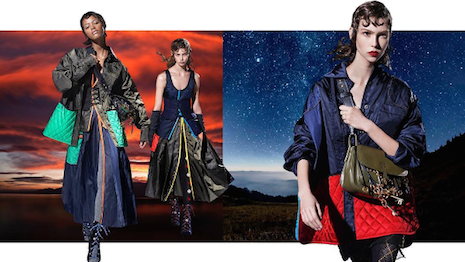- About
- Subscribe Now
- New York,
November 22, 2016

 Image from Prada's fall/winter 2016 women's wear campaign
Image from Prada's fall/winter 2016 women's wear campaign
The luxury apparel market is forecasted to be worth $60.7 billion by the end of 2024, up from $1.8 billion in 2015, according to a report by Transparency Market Research.
To reach its projected 2024 value the luxury apparel market will see a compound annual growth rate of 13.2 percent between 2016 and 2024. Research suggests that women will hold a 50.72 percent share in the overall market, due to their connection with fashion.
Who runs the world?
Due to women’s connection to fashion, TMR expects female consumers to continue as the leading consumers in the luxury apparel market.
Asia Pacific will also remain as market leader with a CAGR of 14.5 percent during the forecast period.
The market is expected to see such significant growth due to the growing number of high-net-worth individuals and their demand for branded goods. According to TMR, the global market is thriving due to increase affordability, rising disposable incomes, improved standards of living, ecommerce and the growing awareness of high-fashion.
These factors have been especially poignant in Asia Pacific economies.
Also of note, is the adoption of mass production techniques which has allowed for faster times between a manufacturer and market delivery. In the past luxury was restricted limited garment production, but mass production and strategic partnerships to outsource production has benefited the luxury apparel market.
Salvatore Ferragamo, fall/winter 2016
Together these points have aided international brands such as Versace, Gucci, Prada and menswear label Kiton, in driving awareness within emerging markets.
“Reaching our into a wider consumer through retailing outlets, ecommerce and increase presence in developing economies will fetch luxury brands bigger revenue,” said the lead author of TMR’s Luxury Apparels Market: Global Industry Analysis, Trend, Size Share and Forecast, 2016-2024 report.
The luxury apparel market’s success does not come without challenges. TMR highlights the primary challenge as being related to high capital investment to design high-fashion as well as the costs involved in building a brand and retaining its history and quality while looking toward growth.
Also, the luxury apparel market is not immune to the vulnerability of the global economy.
In its findings, TMR states that it sees LVMH as the leading player in the intensely competitive market. With a dominant share of 17 percent in 2015, TMR expects the French conglomerate to continue its hold on the market due to its varied brands within its stable.
Louis Vuitton, cruise 2017
Despite the challenging luxury climate, conglomerate Moët Hennessy Louis Vuitton’s revenue grew 4 percent in the first nine months of 2016.
Perfumes and cosmetics outperformed the category, rising 6 percent, while leather goods had a mild increase of 1 percent. Looking ahead, the group plans to harness innovation and expand geographically as it looks for growth amid economic and geopolitical uncertainty (see story).
Share your thoughts. Click here